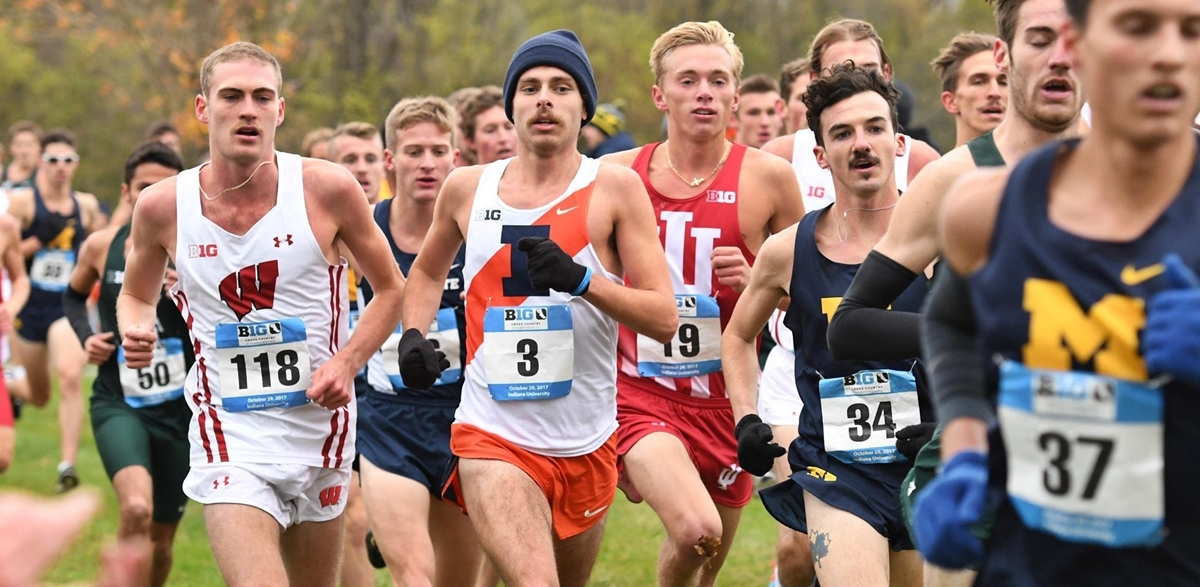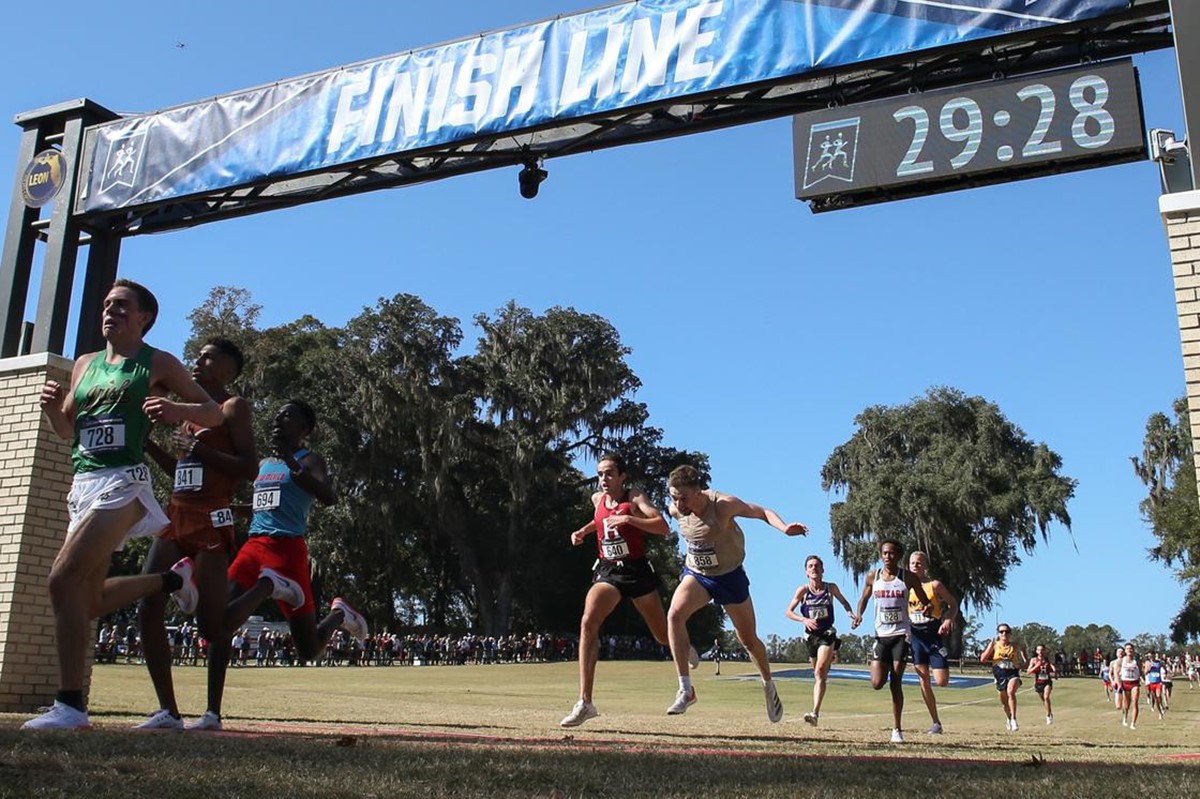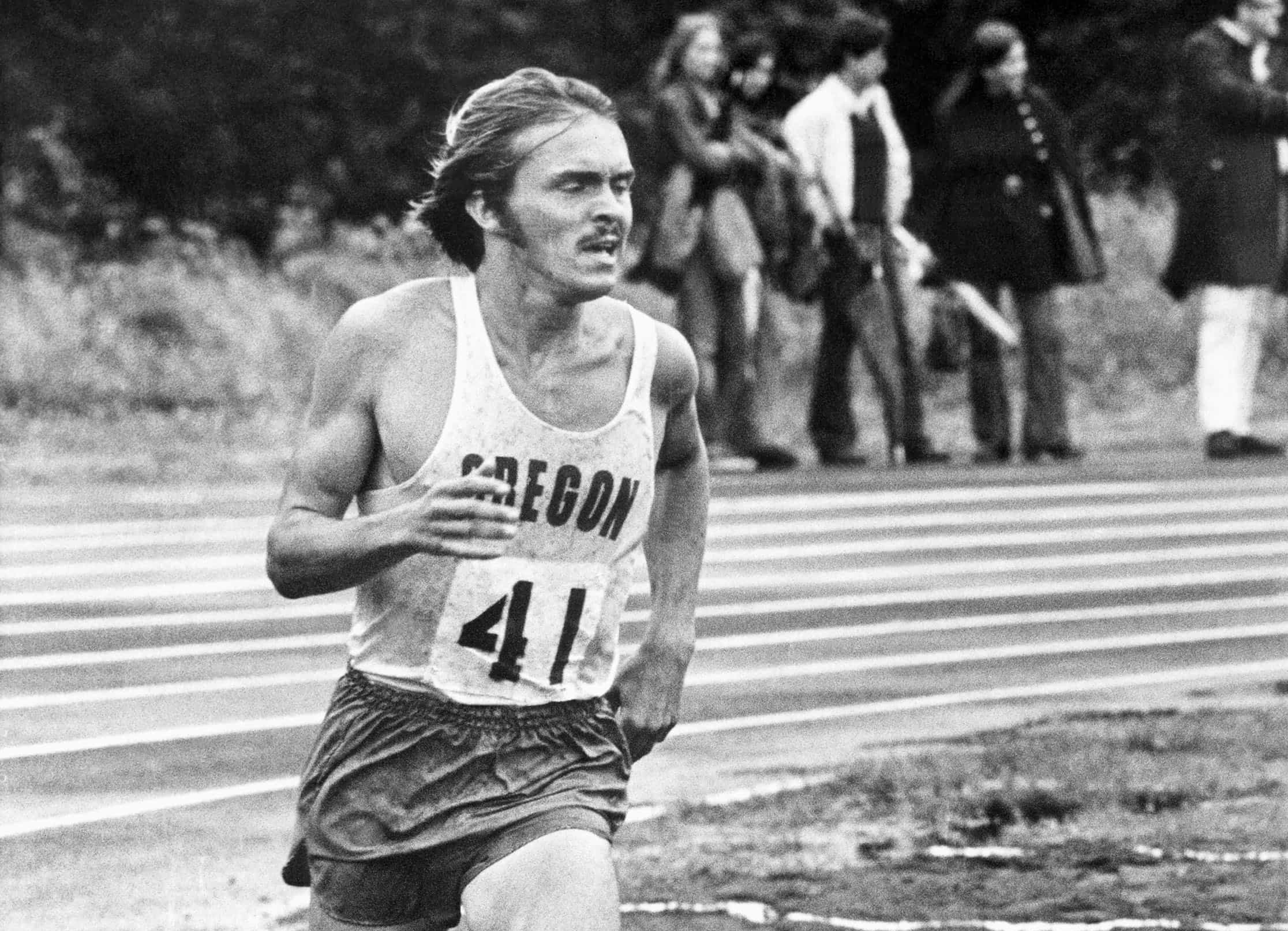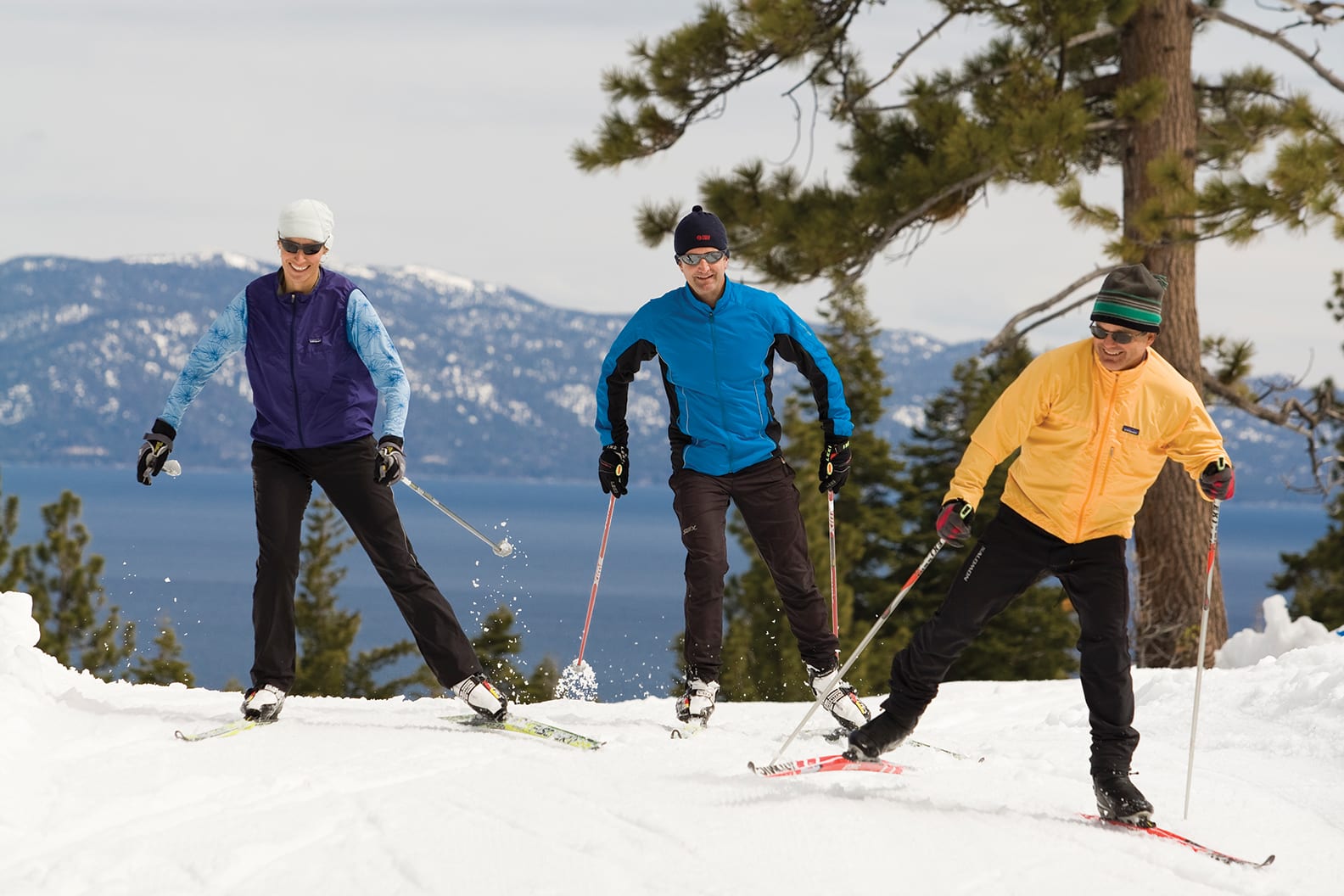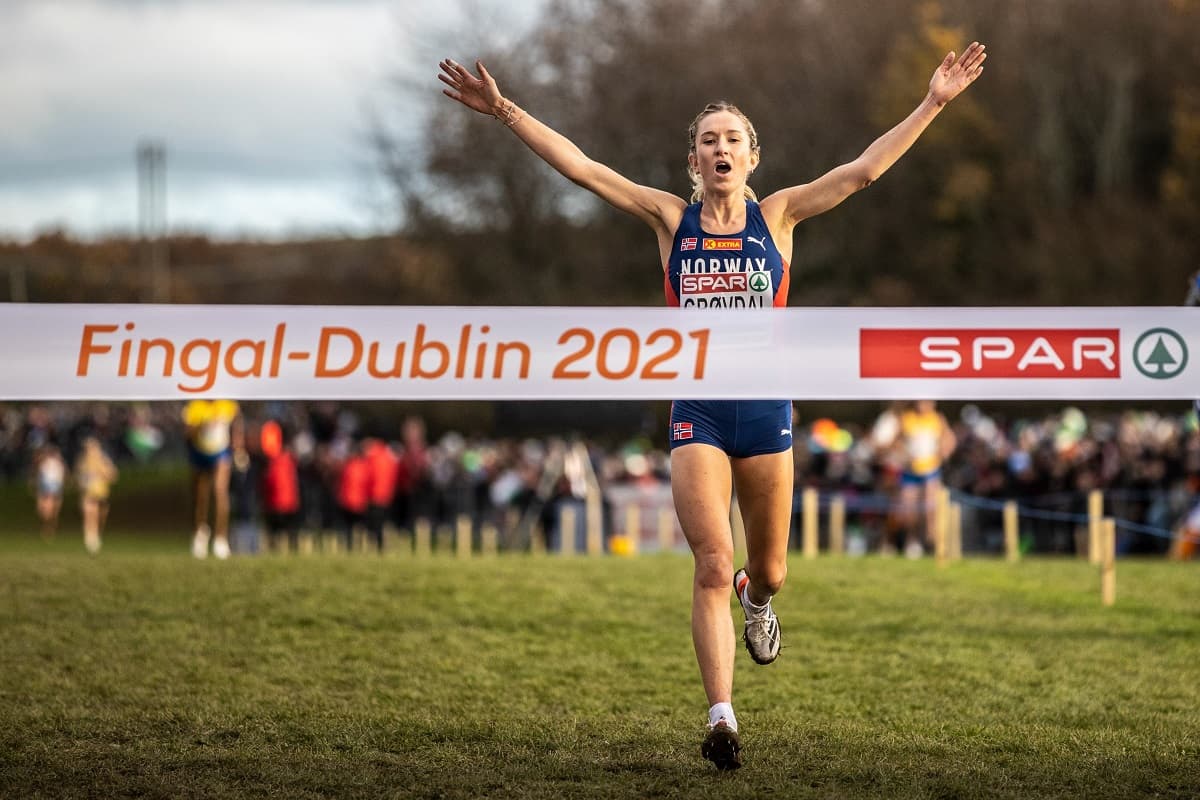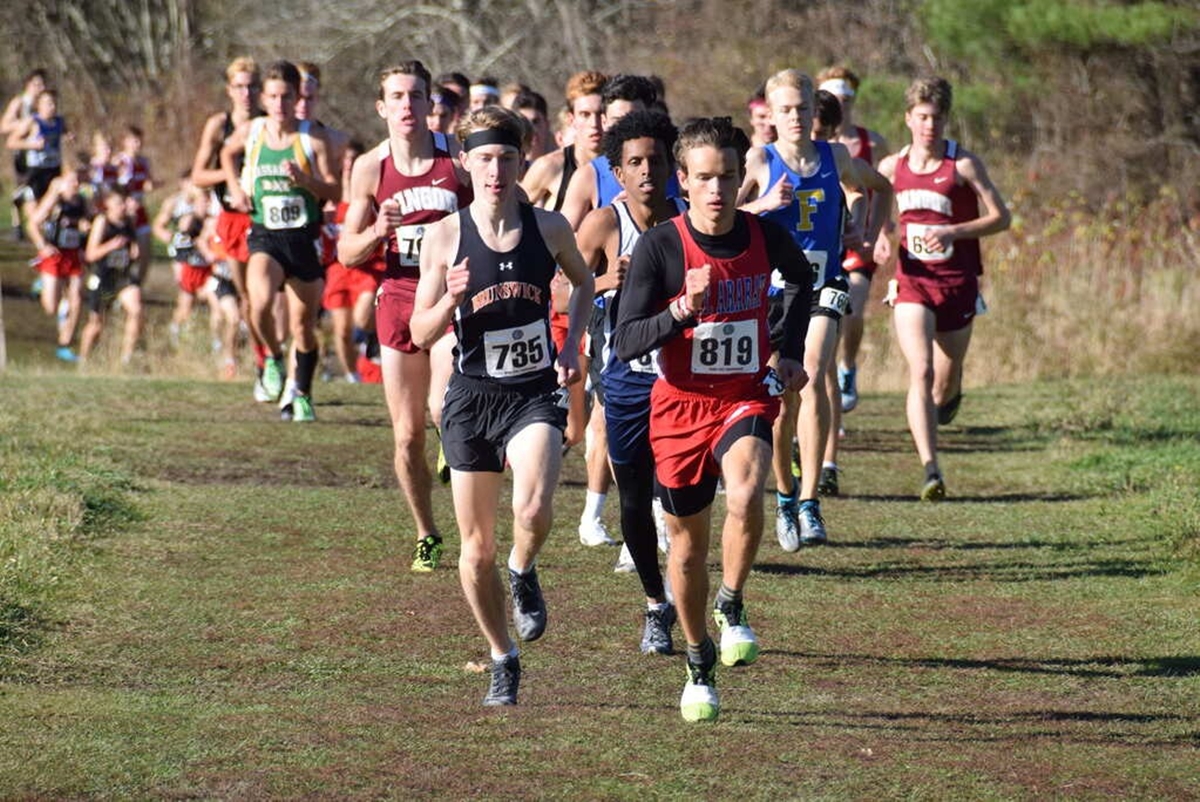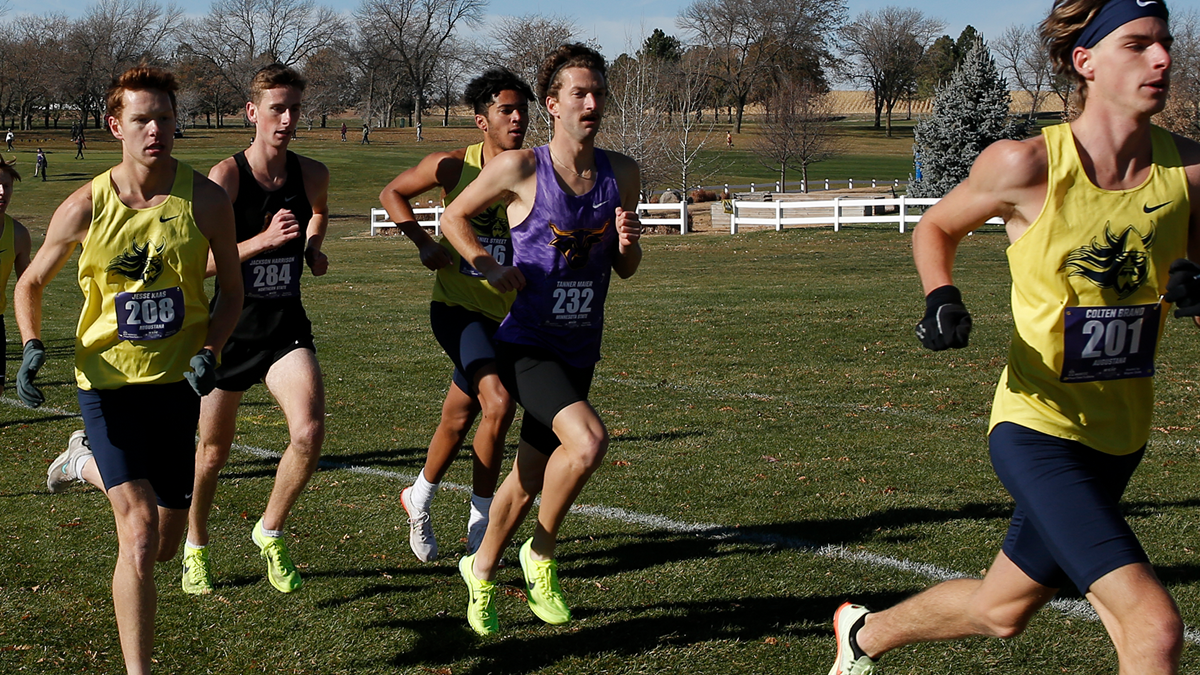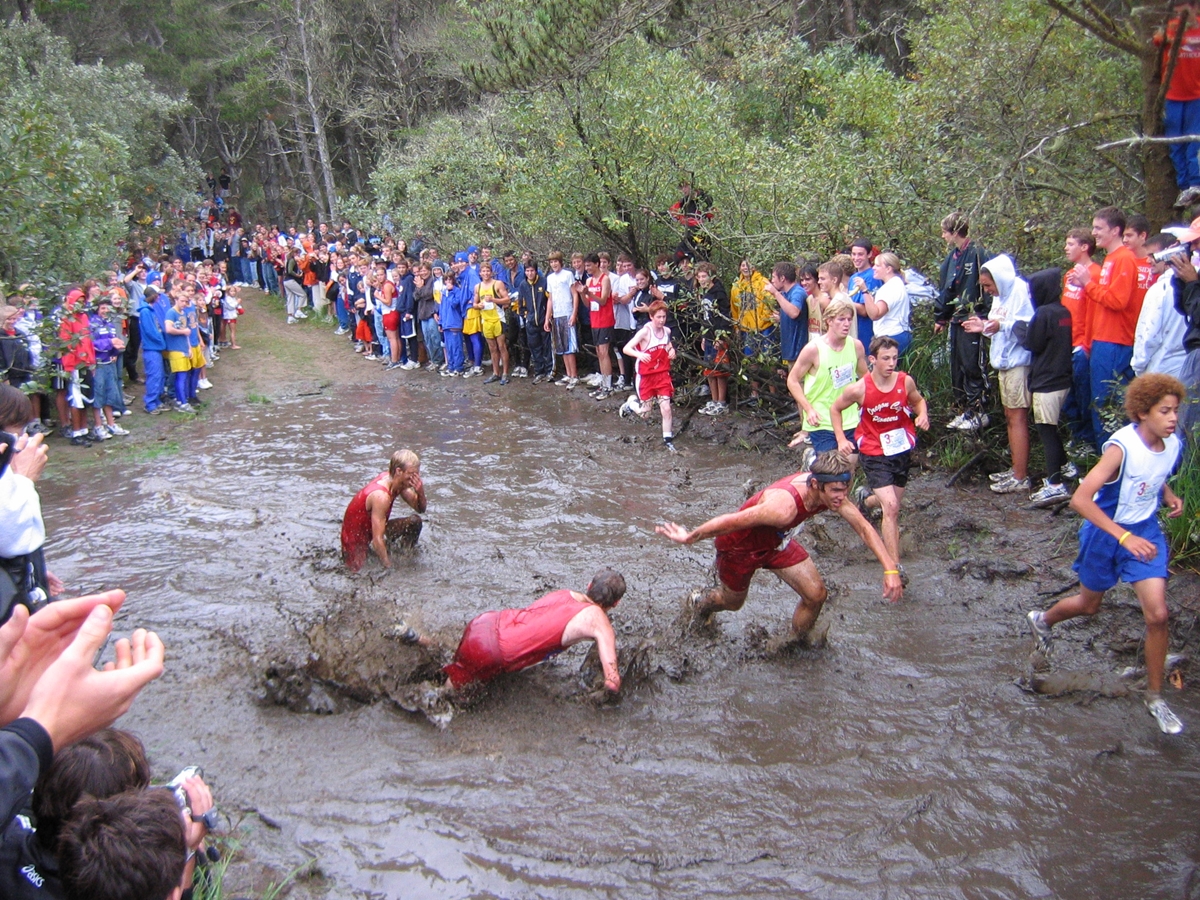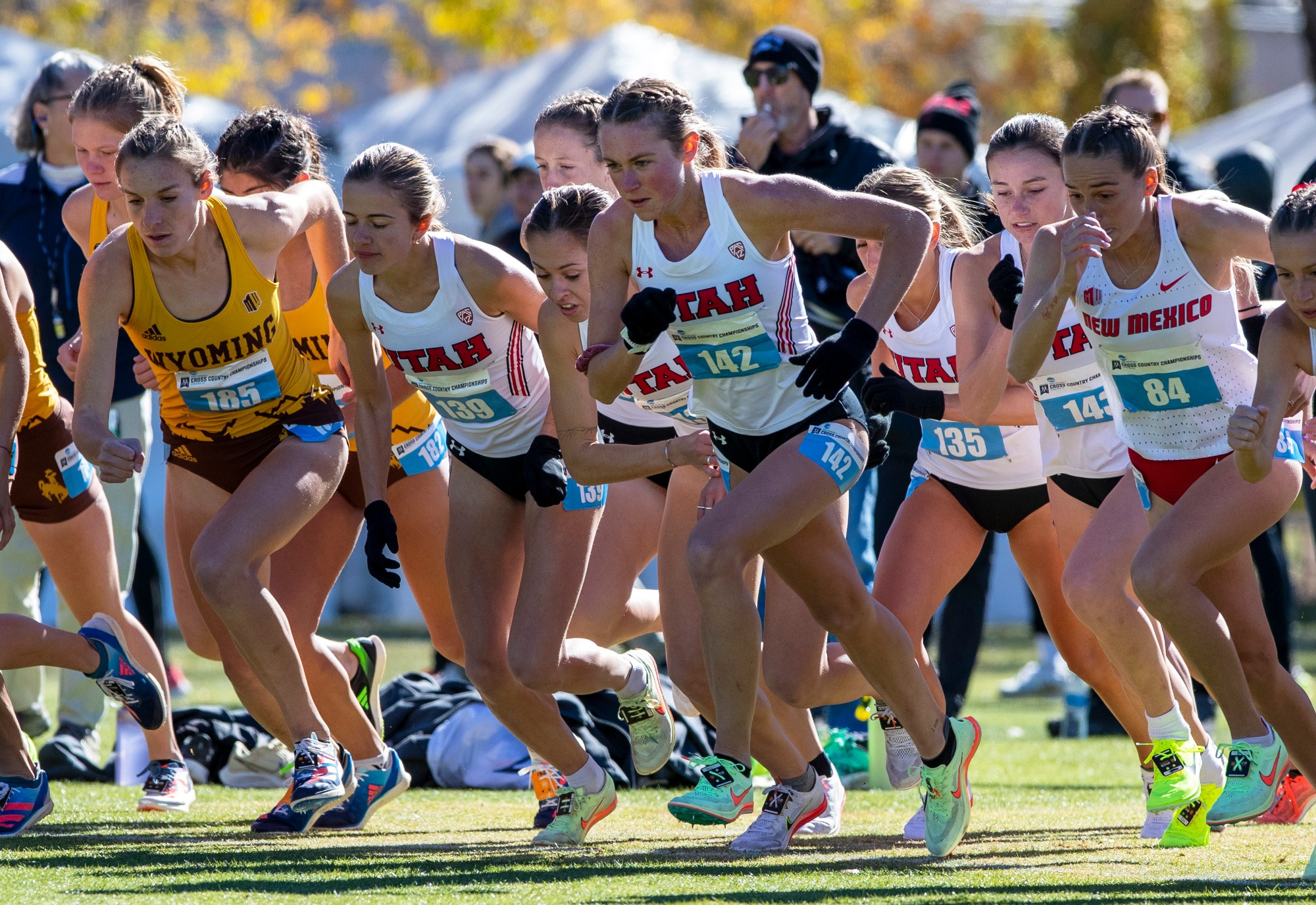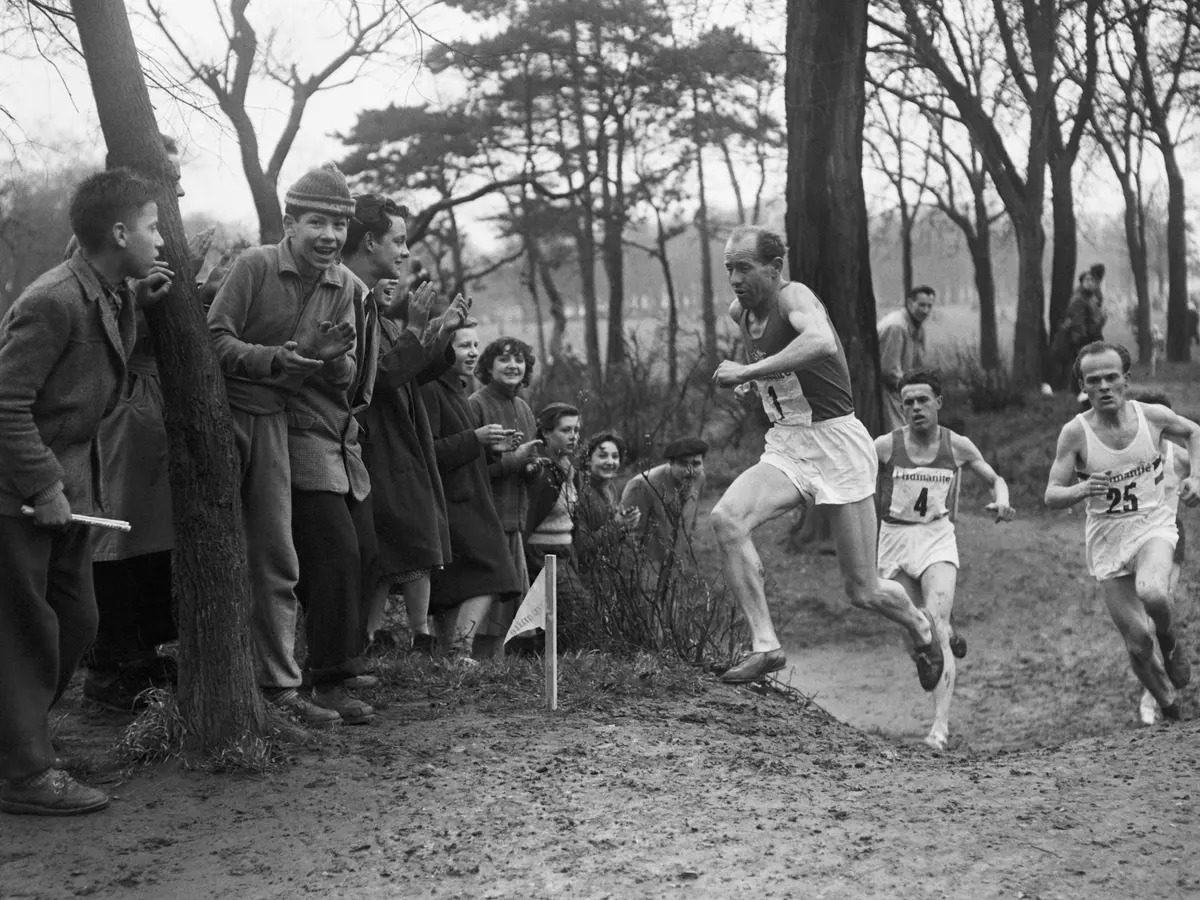

Featured
Where Was Cross Country Invented
Modified: January 2, 2024
Discover the origins of cross country running in this fascinating article. Uncover where this popular sport was first invented and how it has evolved over time. Featured.
Introduction
Cross country running is a popular sport that involves running over open and natural terrain, such as fields, hills, and forests. It is a demanding discipline that requires endurance, strength, and strategy. But have you ever wondered where this sport originated? In this article, we will explore the early history of cross country running and trace its roots back to ancient civilizations.
The sport of cross country running has evolved over time, and its origins can be found in different cultures and societies around the world. From ancient civilizations to the modern era, cross country running has captivated people’s interest and become a sport cherished by athletes of all ages.
In this article, we will delve into the early history of cross country running, exploring its ancient origins and its development throughout the medieval era. We will then discuss the changes and advancements that occurred in the 19th century, leading to the emergence of modern cross country running. Finally, we will explore how the sport spread and gained popularity worldwide.
Whether you are a seasoned athlete, a fan of the sport, or simply curious about its origins, join us on this journey as we uncover the fascinating history of cross country running and its enduring appeal.
Early History
The origins of cross country running can be traced back to ancient times when it was not only a sport but also a means of survival and communication. Running over long distances was a necessary skill for ancient hunters and messengers, enabling them to cover vast terrains efficiently.
Ancient civilizations, such as the Greeks, Egyptians, and Persians, recognized the importance of running and incorporated it into their culture. The Greeks, in particular, played a significant role in the development of cross country running. They organized races known as “dromos,” which involved running long distances from one town to another as a part of their military training.
These long-distance races were not only a test of physical endurance but also a demonstration of strength and bravery. The ancient Olympic Games, dating back to 776 BC, included a race called the “stade” where participants ran the length of the stadium. This event is believed to be one of the earliest forms of cross country running.
The Egyptians also had a tradition of long-distance running. Many hieroglyphs depict individuals engaged in running activities, further highlighting the significance of this sport in their society. In addition to the practical aspects, running was also seen as a way to please the gods, and races were often held as part of religious ceremonies.
During the medieval era, cross country running continued to play a prominent role. It was a popular sport in Europe, with individuals participating in races held within their own villages or between neighboring towns. These races were often festive occasions, drawing large crowds who cheered on the participants.
Unlike modern cross country races, which have defined routes and obstacles, the medieval races were often open-ended. Runners had to navigate through fields, forests, and uneven terrain, mirroring the challenges faced by ancient messengers and hunters. Not only did these races showcase a runner’s physical prowess, but they also required tactical decision-making and the ability to adapt to changing environments.
The early history of cross country running is rich and diverse, spanning different civilizations and eras. From its utilitarian roots in ancient times to the development of organized races in ancient Greece and Europe, cross country running has evolved to become the exciting sport we know today.
Ancient Origins
The origins of cross country running can be traced back to ancient civilizations, where running over long distances played a crucial role in various aspects of life. In ancient Egypt, for example, running was not only a sport but also a means of communication and a form of worship.
The Egyptians believed that running was a way to connect with the gods, and they often organized races as part of religious ceremonies. Numerous hieroglyphs depict individuals engaged in running activities, emphasizing the cultural significance of the sport. Running was also an essential skill for many Egyptians, as it allowed them to traverse the vast desert landscapes efficiently.
Ancient Greece is another civilization where cross country running had its roots. The Greeks, known for their athletic prowess, held races called “dromos,” which involved running long distances across various terrains. These races were not only physical tests but also served as a way to train soldiers and messengers.
One of the most renowned events in ancient Greece was the Olympic Games, which began in 776 BC. These games consisted of various athletic competitions, including a race known as the “stade.” In the “stade” race, participants ran the length of the stadium, which marked the birth of what we now know as sprinting.
However, long-distance running races were also a part of the ancient Olympic Games. The “dolichos,” a race that ranged from seven to twenty-four laps around the stadium, required participants to demonstrate both endurance and strategy.
Ancient Persia is another culture that embraced cross country running. The Persian Empire had a well-developed system of messengers known as the “couriers of the king.” These couriers were highly trained runners who had to deliver important messages swiftly across vast distances.
These ancient origins of cross country running show that it was more than just a sport; it was a way of life. Running played a significant role in communication, survival, and religious practices across different civilizations. These early roots laid the foundation for the development of organized races and the evolution of cross country running as a competitive sport over time.
Medieval Era
The medieval era saw the continuation and evolution of cross country running as a popular sport throughout Europe. It was during this time that organized races became more prevalent, and the sport gained recognition as a competitive event.
In medieval Europe, cross country races were often held within individual villages or between neighboring towns. These races served as festive occasions, bringing communities together and providing entertainment for both participants and spectators.
The courses of these medieval races were typically open-ended, allowing runners to navigate through fields, forests, and uneven terrain. This mirrored the challenges faced by ancient messengers and hunters, as well as testing the physical endurance and tactical decision-making of the participants.
The races were often organized as part of larger celebrations or fairs, attracting large crowds who would cheer on the runners. To add to the excitement, bets were sometimes placed on the outcome of the races, further heightening the competitive atmosphere.
Unlike modern cross country races where competitors follow a marked route, the medieval races were more improvisational. Runners had to rely on their own knowledge of the land and make decisions on the best route to take, depending on the conditions they encountered.
During this era, running in cross country races was not confined to a specific age group or gender. People of all ages and backgrounds could participate, adding to the inclusive nature of the sport.
As the medieval period progressed, the popularity of cross country running continued to grow. The sport gained recognition as an important aspect of physical education and military training. It was seen as a way to enhance fitness, endurance, and agility, skills that were highly valued in a society where physical prowess was crucial for survival.
The medieval era marked an important period in the development of cross country running as a competitive sport. The festive races held within villages and towns, the improvisational nature of the courses, and the participation of people from different backgrounds all contributed to shaping the sport we know today.
Evolution in the 19th Century
The 19th century marked a significant turning point in the evolution of cross country running. During this era, advancements in transportation, communication, and sports organization led to the standardization and formalization of the sport.
One key development was the establishment of cross country races as organized events. In 1837, the Thames Rowing Club in London held the first recorded cross country race, which set the stage for the modernization of the sport. This race, known as the “Grand National” and covering a distance of 4.5 miles, became an annual event that attracted participants from various clubs.
As the popularity of cross country races grew, sporting organizations began to take notice. The Amateur Athletic Club (AAC) was founded in 1866, and their inclusion of cross country running as an official event helped legitimize the sport. The AAC introduced standardized rules and regulations, ensuring fair competition and providing a framework for future races.
In addition to the formalization of the sport, advancements in technology also impacted cross country running. The 19th century saw the creation of improved athletic footwear, offering better support, cushioning, and traction. This allowed runners to navigate various terrains more effectively and enhanced their performance during races.
The 19th century also saw the expansion of cross country running beyond Europe. In the United States, colleges and universities began to incorporate cross country races into their athletic programs. In 1878, Harvard and Yale held their first intercollegiate cross country meet, paving the way for the sport’s popularity across the country.
Furthermore, the establishment of athletic clubs and associations provided a platform for athletes to compete and showcase their skills. These organizations helped to organize and promote cross country races, creating a structured competitive circuit.
Overall, the 19th century was a pivotal time for the evolution of cross country running. The establishment of organized races, the standardization of rules and regulations, technological advancements in athletic footwear, and the expansion of the sport beyond Europe all contributed to its growth and popularity. These developments laid the foundation for the emergence of modern cross country running as we know it today.
Emergence of Modern Cross Country
The emergence of modern cross country running can be attributed to the developments and changes that took place in the sport during the 20th century. This period witnessed the establishment of international competitions, the standardization of race formats, and the recognition of cross country running as an official Olympic event.
In 1912, cross country became an official Olympic sport for the first time. The Stockholm Olympic Games featured a cross country race that covered a distance of 12 kilometers, marking a significant milestone in the sport’s history. This recognition on the Olympic stage further solidified the importance and prestige of cross country running.
During this time, international competitions began to gain prominence. In 1903, the International Cross Country Union (ICCU) was established, paving the way for international cross country championships. The ICCU organized annual races where national teams from different countries competed against each other, fostering a sense of camaraderie and friendly competition among nations.
The standardization of race formats also played a crucial role in the emergence of modern cross country. Distances and course layouts were formalized, ensuring consistency and fairness across races. The International Association of Athletics Federations (IAAF) established guidelines for cross country races, specifying the length of the courses and the number of laps to be completed.
Furthermore, advancements in transportation and communication allowed for easier travel and information exchange, leading to the spread of cross country running globally. Athletes from different parts of the world began to participate in international competitions, further fueling the sport’s growth and popularity.
The inclusion of women in cross country races also marked an important milestone in the sport’s evolution. In the early 20th century, women’s cross country events began to emerge, providing female athletes with opportunities to showcase their talent and compete at a high level.
As the sport continued to evolve, training methods and techniques became more sophisticated. Athletes incorporated various forms of conditioning, endurance training, and cross training to enhance their performance in cross country races. Scientific advancements in sports medicine and nutrition also contributed to the overall improvement of athletes’ physical fitness and well-being.
The emergence of modern cross country is a testament to the sport’s enduring appeal and evolution. Through international competitions, standardization of race formats, Olympic recognition, and the inclusion of women, cross country running became a global phenomenon, captivating athletes and fans alike. It continues to inspire individuals to push their limits, embrace the challenges of running over varied terrains, and celebrate the joy of participating in this beloved sport.
Spread and Popularity
Over the years, cross country running has spread across the globe, captivating athletes and gaining popularity in various countries and cultures. The sport’s appeal lies in its simplicity, accessibility, and unique challenges, which have contributed to its widespread adoption and enthusiastic following.
One of the factors that contributed to the spread of cross country running was its inclusion in school curricula. Many educational institutions recognized the value of the sport in developing physical fitness, discipline, and teamwork among students. Cross country became a staple of physical education programs, exposing young individuals to the joys of running and fostering a lifelong passion for the sport.
Cross country races soon extended beyond the confines of schools to community and grassroots organizations. Local running clubs and recreational groups organized races, enabling people of all ages and abilities to participate. These events fostered a sense of community and camaraderie, creating opportunities for individuals to connect with fellow runners and share their love for the sport.
The accessibility of cross country running further contributed to its popularity. Unlike many other sports that require expensive equipment or specialized facilities, cross country can be practiced almost anywhere. Runners can explore parks, trails, and open spaces, allowing them to connect with and appreciate the natural environment while staying physically active.
The emergence of technology and the advent of social media have also played a significant role in spreading the sport’s popularity. Runners can now connect with fellow enthusiasts worldwide, sharing training tips, race experiences, and supporting each other’s journey. The availability of running apps and online platforms has made it easier for individuals to track their progress, set goals, and stay motivated.
The competitive aspect of cross country running has also contributed to its appeal. From local races to national and international championships, there are opportunities for athletes to showcase their skills and compete at various levels. The excitement of navigating challenging terrains, strategizing race tactics, and pushing one’s limits has attracted individuals seeking a thrilling and fulfilling athletic experience.
Furthermore, the high-profile events, such as the World Cross Country Championships, have brought cross country running into the spotlight. These international competitions draw elite athletes from around the world, captivating audiences and inspiring a new generation of runners.
In recent years, there has been a notable increase in the participation of women in cross country running. This has been supported by the inclusion of women’s categories in races, the growth of women’s running communities, and initiatives promoting gender equality in sports. The increased visibility and recognition of women in the sport have further contributed to its popularity and appeal.
Overall, the spread and popularity of cross country running can be attributed to its inclusive nature, accessibility, and unique challenges. Whether as a recreational activity, a school sport, or a platform for elite competition, cross country running continues to captivate individuals worldwide, fostering a sense of community, promoting physical fitness, and inspiring personal achievement.
Conclusion
Throughout its rich and diverse history, cross country running has evolved from a means of survival and communication to a globally recognized sport. From its ancient origins in civilizations like Egypt and Greece to the standardized races and international competitions of the modern era, cross country running has captured the hearts of athletes and enthusiasts across the world.
The early history of cross country running in ancient civilizations highlights its importance in various aspects of life. Whether as a way to please the gods, a means of communication, or a necessity for survival, running over long distances played a significant role in societies throughout history.
In the medieval era, cross country races became organized events, drawing large crowds and showcasing both physical prowess and tactical decision-making skills. The festive atmosphere surrounding these races brought communities together and showcased the inclusive nature of the sport.
The 19th century marked a turning point in the evolution of cross country running, with the establishment of international competitions, the standardization of race formats, and the recognition of cross country as an official Olympic event. These advancements helped propel the sport’s growth and popularity on a global scale.
Today, cross country running continues to thrive, spreading its appeal and attracting athletes of all ages and backgrounds. The sport’s accessibility, inclusive nature, and unique challenges have contributed to its popularity. With advancements in technology and a growing sense of community among runners, cross country running is poised to continue shaping the athletic landscape for years to come.
Whether running through natural landscapes or competing in organized races, cross country running offers a fulfilling and exhilarating experience. It celebrates the human spirit, showcasing the resilience, determination, and joy that come from pushing beyond one’s limits.
As we reflect on the journey of cross country running, we are reminded of the timeless nature of the sport. It connects us to our ancient roots while inspiring us to embrace the challenges and rewards of the present. Cross country running will continue to be a beloved sport, captivating the hearts and minds of athletes and enthusiasts around the world for generations to come.
